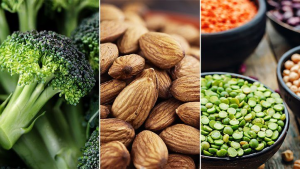Ranveer Singh to play a Gujarati in Yashraj’s Jayeshbhai Jordaar
What should You Expect After Gallbladder Surgery?
Published on May 27, 2019
Laparoscopic gallbladder removal surgery or gallstones removal is also known as cholecystectomy. It removes the gallbladder through small incisions made in the abdomen. The abdomen is inflated with carbon dioxide or air to see the internal organs clearly. The surgeon inserts a laparoscope which has a camera attached on top of it. Then uses a video monitor as a guide to conduct the surgery using surgical instruments to remove the gallbladder. Laparoscopic  surgery is the minimally invasive surgery as it uses several small incisions.
surgery is the minimally invasive surgery as it uses several small incisions.
Gallbladder surgery is important if you experience pain due to gallstones that block the flow of bile. It is performed to treat gallstones and the complications caused by them that include- gallstones in the gallbladder, gallbladder inflammation or gallstones in the bile duct.
Of all the treatments available for gallstones removal, surgical treatment is most widely accepted. The alternative treatments such as home remedies and medications have been effective in alleviating the symptoms of pain and discomfort caused by gallstones in the abdomen.
Complications before surgery
Gallstone may block the bile ducts and disturbs the flow of bile from the liver or gallbladder to the intestine. It can cause bloating, nausea, vomiting and pain in your abdomen, shoulder or back. Gallstones can also cause the gallbladder or bile duct to be infected. A blockage in the common bile duct can cause jaundice.
Gallbladder surgery – a Daycare Procedure
Laparoscopic gallbladder surgery is a daycare procedure. It is a painless process where the patient may be released within 24-48 hours after the surgery. Most people resume normal routine activities within 3-4 days after the surgery. If the patients follow the post-surgery instructions such as diet and exercises, the recovery is faster.
How to digest food without a gallbladder
It is not necessary to have a gallbladder to digest food properly. The bile (digestive fluid) flows directly from the liver through the hepatic duct and the common bile duct to the small intestine. Initially, you may face some digestive problems, but gradually the body will adjust and this problem will resolve with time. It is important to discuss any new symptom or changes in the body post-surgery.
There is a common trigger for gallbladder pain that you are sensitive to or allergic to some food. For example, few people are sensitive to dairy products, but the symptoms are nor prominent or severe so they continue to eat food containing dairy. Similarly, it may be a gluten for some. These are just examples that may trigger significant gallbladder pain.
Diet after gallbladder removal
Some people develop digestive problems after gallbladder surgery. It is important to understand the reason of the digestion problem. Normally, the role of gallbladder is to collect and concentrate the bile and releasing it when you  eat to aid the digestion of fat. So when the gallbladder is removed, bile is less concentrated and drains into the intestines which may result in diarrhea.
eat to aid the digestion of fat. So when the gallbladder is removed, bile is less concentrated and drains into the intestines which may result in diarrhea.
So after surgery, go easy on food. Small meals are easier to digest while too much food at a time may cause diarrhea and bloating. Avoid high-fat food, fatty sauces and gravies and choose low-fat foods. Increase your fiber content as it helps normalize bowel movement. But increase the fiber content gradually. Do not skip meals and eat small at a time. You also avoid foods in gallstones such as sweeteners, dairy products and caffeine.
Talk to the doctor if diarrhea does not go away. The doctor may give some medicines which will slow down the intestinal movement.
Complications after gallstone surgery
Laparoscopic surgery is the most widely used surgery when no factors are present that may complicate the procedure. It is the best way to treat gallstones. The overall risk of laparoscopic gallbladder surgery is very low. It includes:
- Injury to the common bile duct
- Risk of general anesthesia
- Injury to the small intestine
- Internal bleeding
The best part of laparoscopic surgery
- Recovery is much faster and the procedure is less painful than open surgery.
- The hospital stay is short as compared to open surgery. People go home the same day after the surgery while open surgery hospital stay is 3-4 days
- Resume work within 3-4 days in laparoscopic surgery.
Alcohol and surgery
Here are things you can do to prevent problems before your surgery:
- Your doctor must know everything about your health before surgery, be honest.
- Avoid alcohol once you have the dates of your surgery. When you try to quit smoking, you may feel headache, nausea, anxiety or unable to sleep. Tell your doctor about it. It can be treated.
- Ask any questions you have about drinking and surgery.
Conclusion
Gallbladder pain usually happens after eating and becomes severe gradually. You should not ignore the abdominal pain, whether gallbladder is the suspected source or not. If you feel that you have gallbladder attacks, seek for immediate medical help rather than ignoring it because the pain can go worse if left untreated.
Author Bio:
Aisha is a passionate blogger. She has expertise in writing health articles. She have been serving society as a Health adviser. She loves keeping himself up-to-date with the news and happenings around. She is always open to learning and shares his experiences on his Greetings of the Day.











